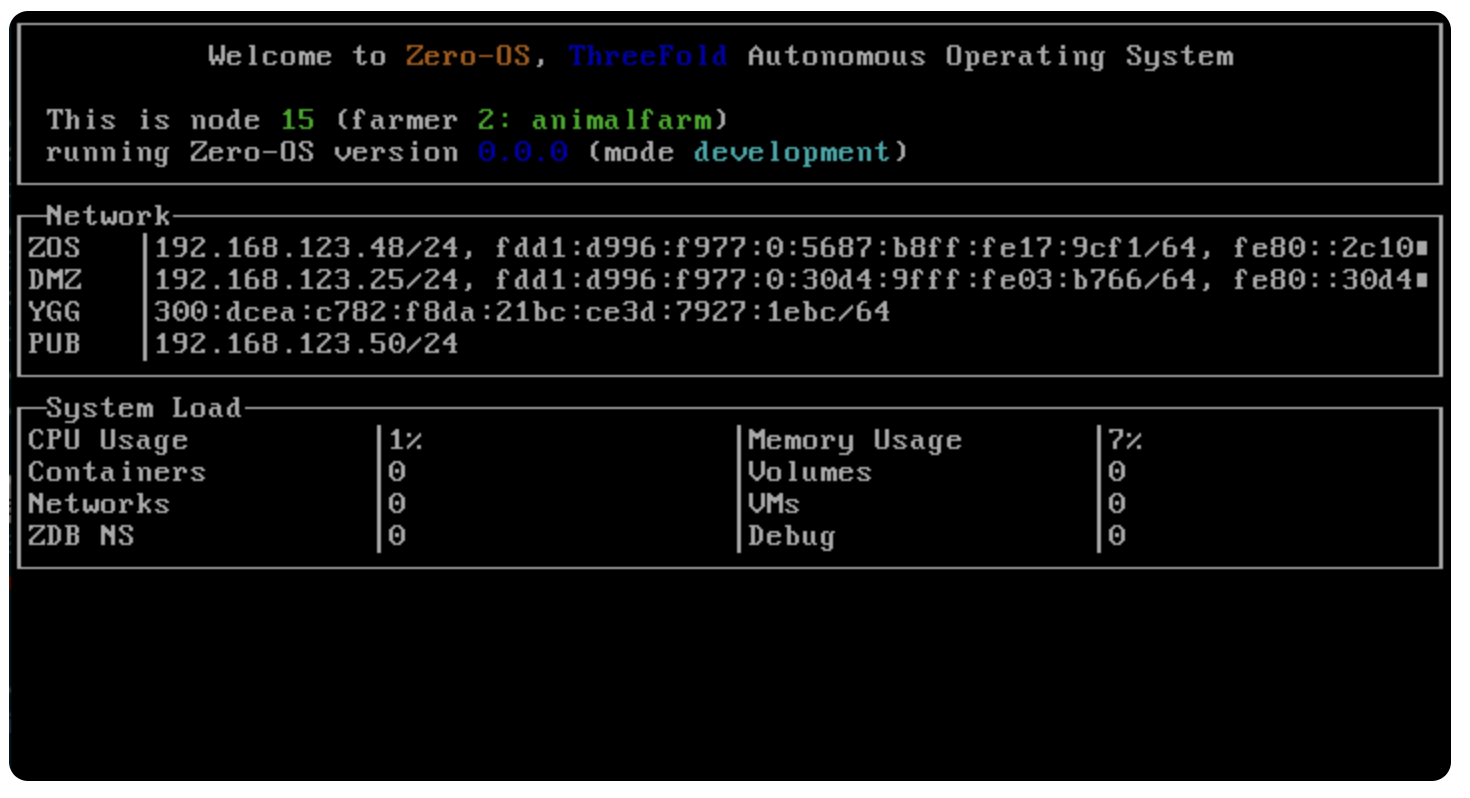
Zero-Install Architecture
The Zero-OS implements a network boot architecture that delivers the operating system to nodes entirely over the internet, eliminating local installation requirements and enabling a stateless computing environment.
Technical Implementation
The Zero-Install architecture consists of several distinct technical components:
Bootstrap Process
-
Bootloader Initialization: A minimal bootloader (supporting ISO, PXE, USB protocols) initializes hardware components and establishes network connectivity.
-
Node Identity Verification: The bootloader securely retrieves and validates the node's identity from hardware identifiers or trusted platform modules.
-
Network Configuration: IPv6 and IPv4 connectivity is established, with support for multiple network interface configurations.
-
Grid Registry Query: The bootloader securely queries the grid registry for information about which operating system components to retrieve based on the node's identity and hardware profile.
-
Component Retrieval: Required software module metadata is retrieved and verified against cryptographic signatures and hash values.
-
Kernel Initialization: The Linux kernel boots with minimal configuration optimized for stateless operation.
-
Core-0 Activation: The primary Zero-OS process (Core-0) initiates and performs self-verification procedures.
-
Service Activation: Core services including the Zero-Stor filesystem, networking components, and the zero image service initialize to enable workload deployment.
Security Architecture
The Zero-Install implementation includes several security mechanisms:
-
Boot Verification Chain:
- Optional secure boot parameters in system BIOS
- Optional cryptographic bootloader verification using BIOS certificates
- Kernel component verification through hash validation
- Runtime binary verification before execution
-
Stateless Architecture Benefits:
- No persistent local state to compromise
- Fresh operating system on each boot
- Immune to many persistent malware threats
- Reduced attack surface
-
Network Security:
- Encrypted bootstrap communication
- Certificate-based authentication
- Secure channel establishment for component retrieval
Technical Advantages
The Zero-Install architecture delivers several technical benefits:
-
Reduced Operational Complexity:
- No physical installation or on-site maintenance required
- Automatic updates through network boot process
- Simplified hardware requirements (no local OS storage needed)
-
Enhanced Reliability:
- Consistent operating environment on each boot
- Elimination of state-related failures
- Hardware failure isolation through stateless design
- Simplified recovery through node replacement without data migration
-
Deployment Efficiency:
- Rapid provisioning of new nodes
- Zero-touch deployment capability
- Consistent environment across heterogeneous hardware
- Centralized OS version control and update management
Node Deployment Process
The full deployment sequence for a Zero-OS node follows these technical steps:
- Hardware Deployment: Compatible hardware is deployed at the desired location
- Resource Farm Configuration: The system is registered on the grid explorer interface
- Bootloader Configuration: A minimal bootloader is implemented via USB media or network boot
- Network Initialization: Internet connectivity is established and hardware powered on
- Boot Sequence: The system automatically retrieves Zero-OS components from the network
- Cryptographic Verification: All components are verified against published signatures
- Service Initialization: Core services activate and register with the grid
- Workload Readiness: The node becomes available for workload deployment
This architecture enables Zero-OS to operate without installation on local storage media (hard disk, SSD), implementing a true stateless architecture that enhances security, reliability, and operational efficiency.
Implementation Status
The Zero-Install architecture is fully implemented and in production use, providing the foundation for all Zero-OS deployments in the distributed grid infrastructure.